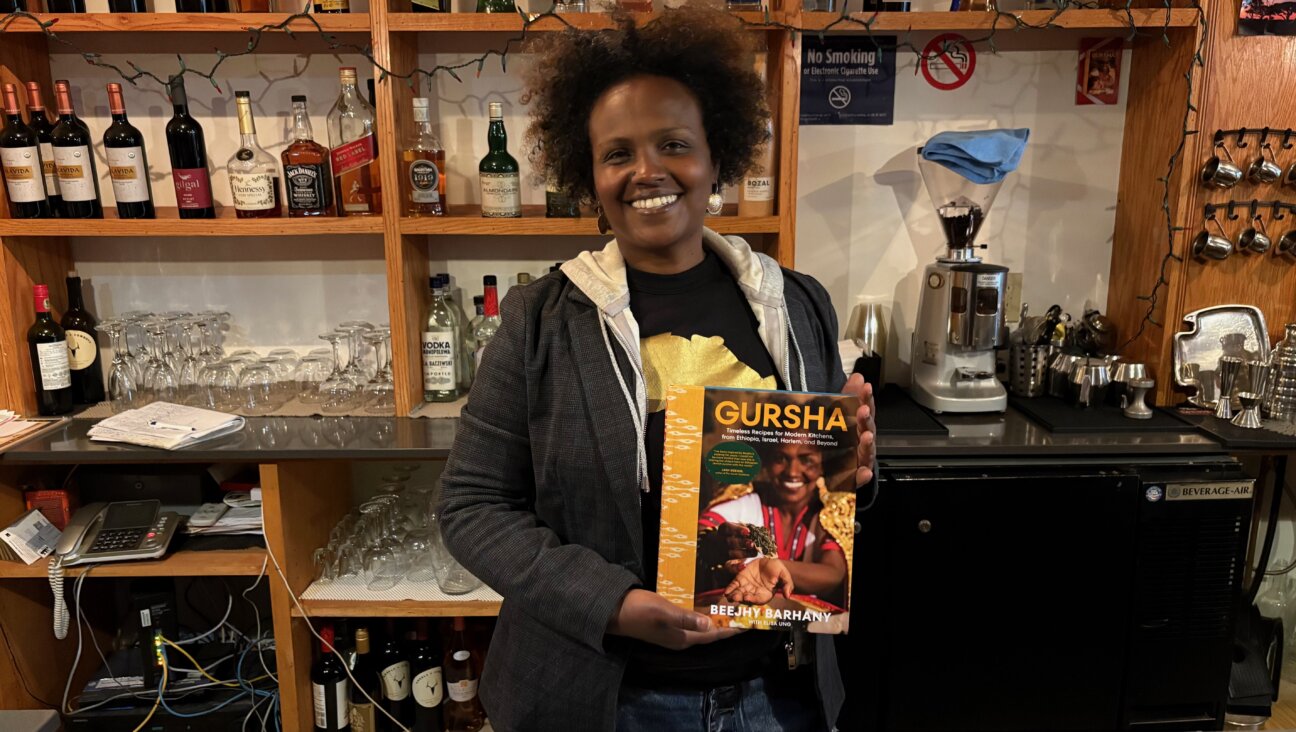How to make perfect Southern buttermilk biscuits

Graphic by Angelie Zaslavsky
For Joseph Calvo and many southerners, biscuits are just the dish these difficult times demand.
“It’s hard not being able to travel and be with family for Thanksgiving. Cooking foods that hold memories bring forth a familial comfort,” Calvo said. “Biscuits do that for me.”
This past Sunday, Calvo, an expert home baker born and raised across the American South and now living in downtown Los Angeles, hosted an online biscuit-making class for Community Kitchen, a monthly cooking series I founded to bring people together through food.
Calvo guided us in a baking workshop and peeled back the buttery layers of the biscuit’s significance in Southern life.
“The biscuit is ubiquitous in the South. I can’t imagine a holiday meal without them,” said Calvo, who started a bakery at the age of eight and has been tweaking his biscuit recipe since childhood. “Biscuits serve double duty: they are delicious on their own, but also perfect to sop up gravy and whatever is left on your plate.”
The lesson was as close as many of us will get to a big Thanksgiving gathering, when friends and family cram into the kitchen to cook, gossip and steal bites of dough.
That’s the goal of Community Kitchen.
Each month, a different host circulates a recipe from their culture prior to the event. We buy ingredients from local ethnic grocery stores and make new community connections. Then, we convene over Zoom and make meals together as the host walks us through the recipe and shares the stories behind it. In exchange, we support causes that are close to the host’s heart – for this Sunday’s biscuit workshop, we raised funds for World Central Kitchen.
Past Community Kitchen events have celebrated India’s Independence in August by making the iconic street food bhel puri, enjoyed the Ethiopian New Year in September with shiro and tibs, and marked Nigeria’s 60th birthday last month whipping up jollof rice with fried chicken and plantains.
With Thanksgiving approaching, we turned our attention to a classic from our own shores: the buttermilk biscuit, the perfect complement to any holiday meal and a staple of southern cooking.
The origins of today’s biscuits were developed in the antebellum South with “beaten biscuits.” In the days before industrialization, wheat flour was quite expensive and these biscuits were a delicacy, usually served only for Sunday lunches. Without widely available leavening agents, cooks had to beat air into mixtures of flour and fat to produce a rise.
Typically this was the duty of enslaved cooks, and the grueling process could take well over an hour. With the end of slavery, biscuits became seen as too burdensome and fell out of popularity.
The 1880s breathed new life into biscuits with several culinary innovations. First, the mechanization of mills and increased wheat production made flour more affordable. Second, the development of leavening agents like baking soda and baking powder let bakers produce a taller biscuit, reaching new heights without such tiring effort.
Essential to these airy biscuits is the soft winter wheat grown in the South that had lower protein content than northern wheat. The gold standard for biscuits has long been White Lily flour, grown and milled in Tennessee.
“Some southerners swear you can’t bake biscuits without White Lily,” Calvo said. “All-purpose flour or pastry flour made with soft wheat will still produce a lovely biscuit. Flour with a lower protein content will produce less gluten and lead to a more tender biscuit. You need enough to provide structure, but too much and you keep the biscuit from rising and getting that airy feel.”
Calvo pointed out that biscuits bring up many strong opinions among southern cooks — debates range from topics such as which flours and fats to use, whether to cut biscuits from dough or “drop” them into the skillet, and whether to add sugar.
“I do like biscuits on the sweeter side, but some think that adding sugar to the dough is blasphemous,” Calvo said. “Some say if you add sugar it’s a scone.”
Many believe buttermilk is essential to biscuit making. Its acidity interacts with baking soda to help leaven the biscuit and adds a sweet tangy taste. Buttermilk was originally the liquid left from churning cultured cream into butter, but most buttermilks in groceries today are simply cultured milks, which actually have more in common with yogurt than traditional buttermilk.
If you can’t find buttermilk, other cultured dairy products, like yogurt or kefir, can work as alternatives. If you’re vegan or want non-dairy biscuits, you can even add apple cider vinegar to soy milk (or any nut milk) and substitute vegan butter, and your biscuits will still turn out delicious, although they too may be seen as blasphemous to traditionalists.
Join us for our next Community Kitchen on Sunday, December 13 as we celebrate Hanukkah by learning legendary latke lore and perfecting our potato frying technique with Forward National Editor and Food Editor Rob Eshman.
Stay tuned for future events by signing up for our mailing list at our website thecommunitykitchen.co or following our Facebook page or Instagram @the.communitykitchen.
Seven Southern Biscuit Basics
• Keep your ingredients cold, especially the butter and buttermilk. Freeze your butter and use a cheese grater to shave shards of it into your flour.
• Handle the dough as little as possible to avoid building too much gluten or warmth. Let the flour and butter form into little pebbles so the butter melts when it bakes and creates buttery pockets of air.
• If the butter melts while making dough, refrigerate for 10 minutes then continue.
• When cutting your biscuits, avoid twisting the cookie cutter as this can prevent the biscuits from rising. Push down and lift straight up.
• When placing raw biscuits on your cast iron skillet or baking sheet, try to get each one to touch each other or the side of the pan to equally distribute heat and help them rise up instead of spreading out.
• If you don’t have a scale to measure flour, use a spoon to scoop it into the measuring cup as volumes can vary greatly depending on how tightly packed your flour is.
• Biscuits are great as is, but add herbs like rosemary, thyme, chives, or parsley and cheddar cheese to biscuits as desired!
Southern Buttermilk Biscuits
Makes 12 buttermilk biscuits. Total time: 1 hour
Ingredients
2½ teaspoons baking powder
2 teaspoons kosher salt
Big pinch of sugar
¼ teaspoon baking soda
3 cups (360g) all-purpose or pastry flour
12 tablespoons (165g / 1.5 sticks / 6 oz) chilled unsalted butter
1 cup (250g) chilled whole-milk buttermilk (or equal parts low-fat buttermilk and whole-milk yogurt)
Directions Make Dough
1. Preheat oven to 425°.
2. Dice butter and put in the freezer while preparing dry ingredients.
3. Mix baking powder, salt, sugar, baking soda, and flour in a food processor (or whisk in a bowl to combine).
4. Add chilled butter and pulse in processor (or use a pastry cutter, or rub butter in flour and press between your thumb and index fingers) until largest pieces of butter are the size of a pea.
5. Transfer dough to a large bowl and drizzle buttermilk as you use a fork to incorporate.
6. Knead mixture until the dough comes together a bit. Turn out onto a clean surface and pat into a 3/4 inch square.
Shape Dough
1. Sprinkle the dough with flour, then fold it in half and then in half again. Handle the dough as quickly and minimally as possible.
2. Pat the dough into 1 inch thickness and trim a thin border around sides of dough to create clean edges (if desired).
3. Cut into a 4-inch x 3-inch grid to make 12 biscuits.
4. Transfer to a parchment-lined baking sheet, spacing 2 inches apart; freeze 10 minutes.
Bake Dough
1. Brush tops of biscuits with melted butter, sprinkle with flaky salt (if desired) and place in oven.
2. Reduce oven temperature to 400° and bake biscuits until deep golden brown on bottom and golden on top, 20–25 minutes.
Zach Marks is based in Los Angeles. Sign up for the Community Kitchen mailing list and events at thecommunitykitchen.co. He would love to hear your favorite recipes and food memories — and if you are interested in hosting an event and raising funds for a cause close to your heart — at [email protected].

















